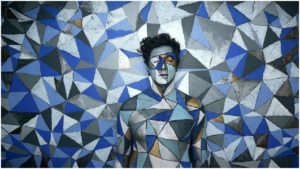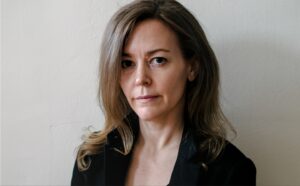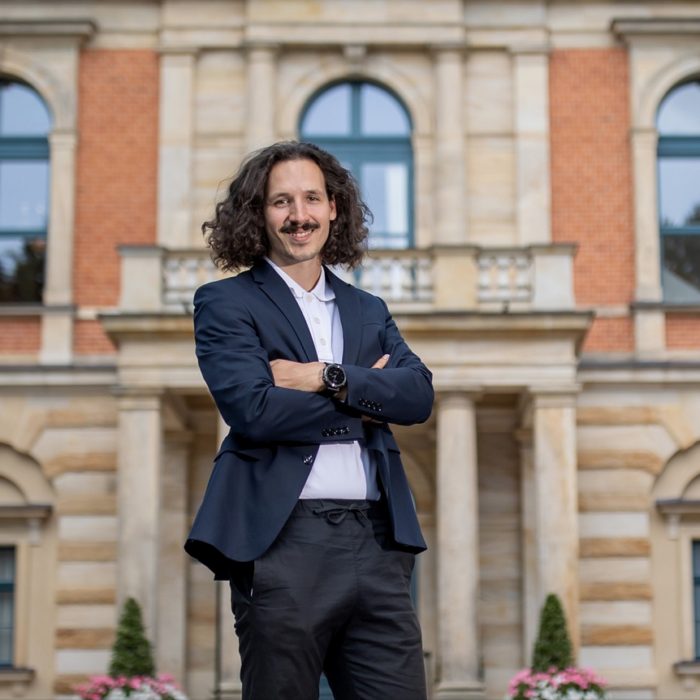
Q & A : Dingle Yandell on Digital Opera & Popular Music Videos With ‘What Power Art Thou’
By Jennifer Pyron(Credit: Zen Grisdale)
The Orchestra of the Age of Enlightenment (OAE) is actively creating new life in the digital realm of opera by evolving the genre’s traditional standards and exploring alternate creative interpretations to share with audience members at a broader level through a new series called “music video remake” films.
The aesthetic concept underlying OAE’s recent film which features bass-baritone Dingle Yandell’s interpretation of Purcell’s “What Power Art Thou” is one that marries the idea of a popular music video, Gotye’s “Somebody that I used to know” with the art world. Seemingly shaping and shifting expectations around the idea of a popular music video making a song “famous” through instant gratification but still “missing the mark” around an opera’s lasting effect, OAE instead interprets Purcell’s aria as a rich landscape of emotional and imaginative pathways by staying true to the core of opera as an art form and thinking through every single step along the way.
OperaWire spoke to Dingle Yandell to learn more about his interpretation of this aria and the artistic involvement that is driving forward what digital presence means for the future of opera.
OperaWire: How did you creatively prepare for this film? Will you walk me through your process and transformation?
Dingle Yandell: Crispin Woodhead, OAE Chief Executive, approached me with an idea about pairing popular music videos with baroque music and described how this unusual marriage would generate a new experience around classical music. I thought it was a great idea and I was interested in trying something different as an artist because I find this sort of freshness to be really exciting.
The concept around Gotye’s stop-motion video for “Somebody that I used to know” and the fragmentation of musical expression within Purcell’s aria “What Power Art Thou” from King Arthur, which is about the cold encompassing The Cold Genius, and the idea of him wanting to return to being frozen again, fit really well. Purcell’s aria which already has this jarring aesthetic about being cold and being frozen is similar to the starting and stopping of a stop-motion film. The music’s incredibly unusual rhythmic pattern works really well together with this idea.
Woodhead also mentioned how he wanted to use colors that were colder than Gotye’s video, which are warmer. After considering all of his ideas I then decided to pull out this aria again and rethink it.
I have performed this aria a lot and it is such an unusual piece because it stands in a remarkably modern way, still, hundreds of years later. Specifically, I looked at the legato of this aria because it requires an energy line that must be sustained throughout the piece. It is easy to look at this music and think it does not require a line of energy, however re-examining this piece now I find myself understanding the importance of growth and development of this energy line.
We recorded the aria separate from the film, in Lutyen’s church in Golders Green at St. Judes-on-the-Hill. This provided us with the best acoustics and the reverberation of my voice helped create the energy line I wanted throughout the aria. We also wanted to express a feeling of intimacy while recording this piece and so decided to create a circle with me in the middle. This then gave a nice visual of us being around a fire together, reducing forces, and feeling this sort of vast expanse around us.
A sense of isolation while being surrounded by large voids, with the cold creeping in all the time. This was great because it assisted me with getting into the dramatic character of The Cold Genius.
The filming portion was different in that it was generally focused around just my head and so I had to, with just my head, translate the drama of the piece. This required me to really work on my facial dramatics, which I feel will ultimately benefit me in regards to virtual streaming performances overall. I worked on developing micro-gestures with my face and syncing these movements to the film, which took approximately ten hours to film.
OW: Tell me more about your energy during the filming process. How did you self-preserve and self-sustain your creative energy over the course of filming for 10 hours? What was going on in your head, while your head was all that was being filmed?
DY: This is an important question to consider actually because with the four artists that were around me and painting me over the course of 10 hours of stopping and starting for the film, in a room that was not related to a stage, I really had to dig deep and appropriate the music. I am lucky because I have performed the whole opera before and I know where the aria is in the opera and how the music hits you like a sledgehammer when it begins. Instrumentally this aria makes you stop and think in such a way that very deeply moves you and so I used this deep understanding of the music during the film to translate its entirety.
Another important factor for me was remembering this as a piece that grows and develops throughout. I wanted to make sure that at the beginning I was not at 100 percent with my facial dramatics because I knew I would be required to grow and develop these micro-gestures as the aria grew and developed. This is why I started with my eyes closed and a still body. I knew what would eventually be required of me energetically as the aria progressed.
Also, the fact that this film did take 10 hours to create, I can see how I would be fresh at the start and then just naturally drained by the end. It translates well in the film because it is the natural progression of both the creative process and character in their entirety. Although I did not plan on this to happen in this way, it did and I feel it expresses The Cold Genius’s intention to return to being frozen again.
OW: What is your opinion about this type of project and how the film captures the aria but does not capture the entire opera? Do you foresee this as being an effective way to engage listeners with the art form?
DY: Classical music traditionally has a purist set of standards and expectations, however, to prevent new creative ideas that support the expansion of classical music’s expression would be an anathema. Most creative artists that are pushing the boundaries of expression through classical music have a sense of deep connection to the music and therefore create works at a high level. I also think the reason why this film works and delivers a high-level performance with one aria is because everything was really thought through. If you were to artistically break it apart and analyze it in connection with the aria, I think it would show dedication and passion towards the subject matter of this type of performance. The high regard that everyone involved in this project has for opera and this way of presenting it can be felt and can be realized as beneficially engaging both opera traditionalists and potential opera listeners alike.
I do feel this is a perpetual question that is difficult to answer though because it requires a depth of connection to opera and the human senses together. Again, this project introduced the visuals first and then the aria began. The audience was captivated one at a time through the sense of sight and hearing which then invited them into the experience in an interesting way. I also feel that as a performer it is important to take critique as it comes with regards to how sensitive you have to be when creatively pushing the boundaries of classical music to begin with and how much in depth research is required to make all of those deeper level connections.
OW: As I was watching this film I kept imagining it as a live art installation. Taking this out of the studio and creating a space where audience members could come and experience the creative process live. What are your thoughts on this idea?
DY: The entire process of filming took ten hours and I can imagine audience members would learn a lot while walking about and witnessing this in person during that amount of time, especially when they see firsthand the passion and dedication of every artist involved.
The film as an installation would show the inner workings and artistic contributions from everyone at this deeper level and I think this idea is interesting and would pique curiosities about opera as an art form in many ways.
The film as a live art installation would stimulate the senses of audience members and invite everyone to learn more together about the creative processes required to present a well-developed art performance piece.



